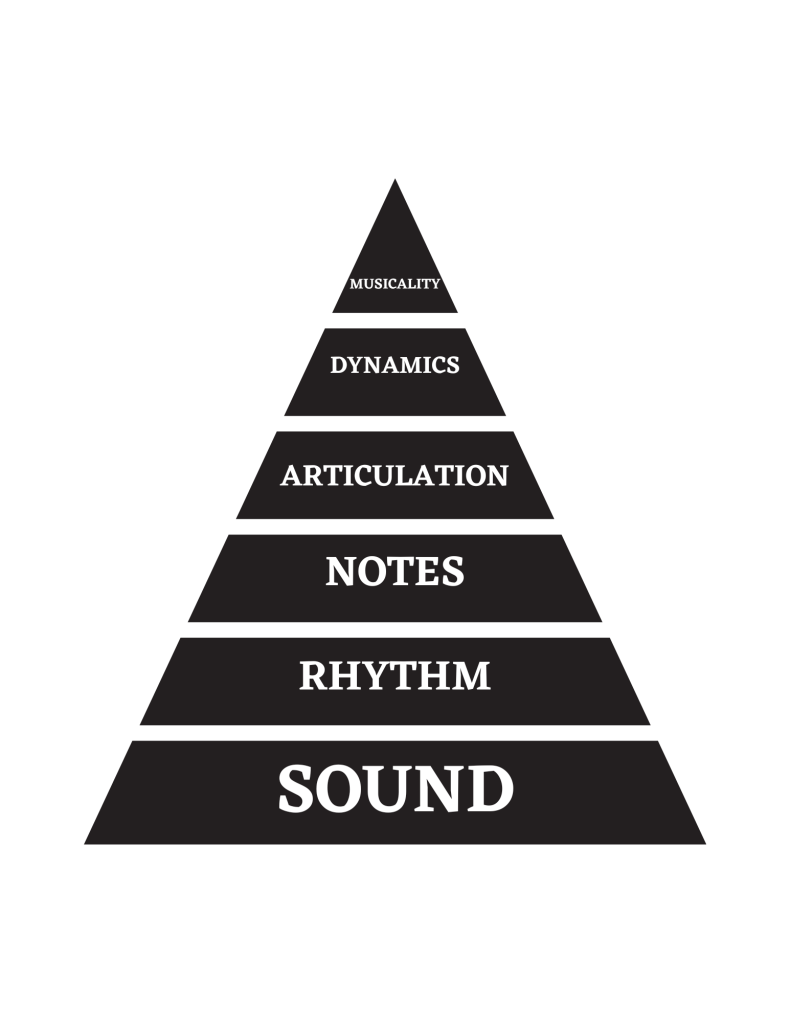My students are familiar with my music pyramid. I use it when I’m assessing a student’s playing – it helps them put elements of music in perspective, and breaks down their approach. I have found that when my students approach their practicing in this order, they are able to tackle music that they find difficult quicker, because it gives them a clear direction.

Each aspect of the music builds on the previous layer.
- Sound – I value playing with a good sound above all else. If the player is constantly adjusting to get a good sound, they won’t be able to focus on anything else.
- Rhythm – most people I show this to, think that notes come next, but for me, it’s rhythm. I was once told that notes, and harmony without rhythm is mush. That has stuck with me. When we break down their rhythms first, and then apply the notes, we are able to process the piece, and future pieces much more quickly.
- Notes – applying the correct pitches to the newly learned rhythms allows us to play the piece.
- Articulation – how we shape each note, or phrase. This comes before dynamics, because at first, we need to play with a louder sound to have each articulation speak clearly. As we gain more control over our articulation, then we can apply them at all volumes.
- Dynamics – once we have control of all of the elements that come before, dynamics add the character, and excitement that the music needs. Dynamics can add intensity, and variety to our pieces!
- Musicality – once we have our sound, rhythm, notes, articulation, and dynamics together, then we can be truly musical. It could be ornamentation, vibrato, or a player’s personal phrasing. The top of the pyramid, is always developing with practice (on all of the preceding elements, and with musical maturity).
When we run the pyramid, I always note that as a player becomes more proficient, the bottom three elements take far less time that they do initially. With enough practice, players can break down some or most of these elements simultaneously, and music becomes familiar.

Leave a comment